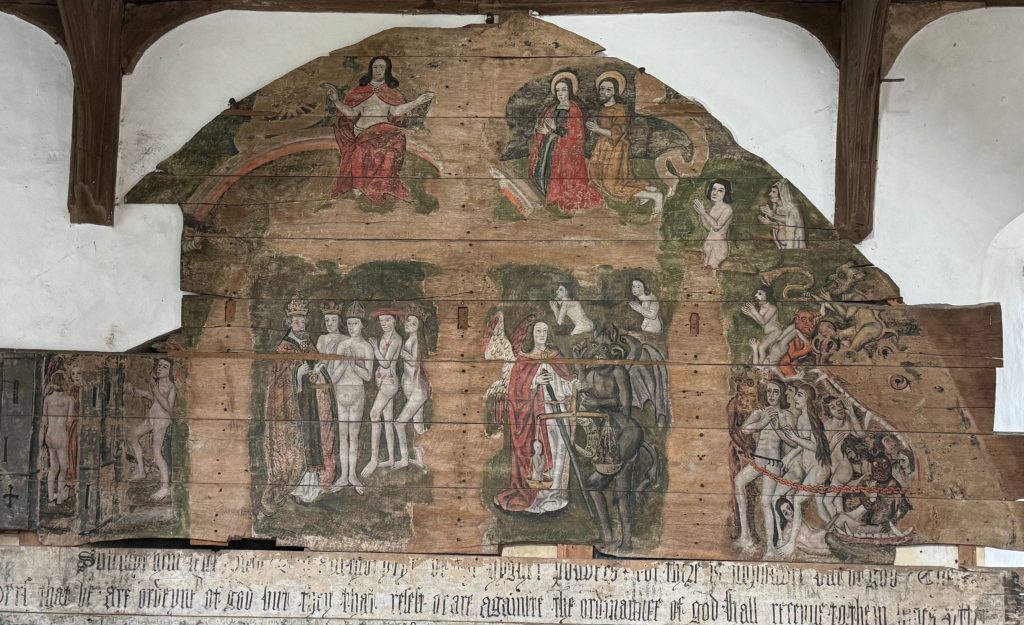
In old English the word “doom” means judgement. So, the doom paintings that were very common in English Churches in the late medieval time depicted the fate that would befall all those looking at them. Either their souls would be saved and they would go to heaven, or they’d be eternally damned and go to hell.
Of course, at the time literacy levels weren’t high. Many people could not read the bible themselves so the Church used all means available to press home this message. The spoken word of the priest was one way of doing this. They other was using graphic visual images depicting the judgement everyone would face upon their death.
Doom paintings could therefore be seen in many churches, with parishes saving up – sometimes for decades – to commission artists to paint them in their churches.
And then came the Reformation.
Idolatry and imagery associated with Catholicism were no longer tolerated so many of the doom paintings were destroyed, removed or simply whitewashed.
Today only around sixty known doom paintings survive in England. And we have recently seen two of them. One was at the Holy Trinity Church in central Coventry; the other at St Peter’s Church in Wenhaston, East Suffolk.
In the Holy Trinity Church, it’s hard to pick out the detail of the doom painting as it’s positioned high above the nave of the church. However, there’s a great display board which tells the story of the painting and explains the images depicted.
St Peter’s is a much smaller parish church and the painting is right in front of you at ground level. You can clearly see images of the weighing of souls and hell (on the right hand side) and heaven on the left.
It’s not known when the St Peter’s doom was first painted. Experts think around 1520. We do know that it was whitewashed over during the short reign of Edward VI in the 1550’s when he abruptly returned England to Protestantism, after the Catholic reign of his half sister Anne.
During restoration of the church in 1892 the whitewashed planks were removed from the church and left outside. The plan was to throw them away. Overnight it rained, washing away the whitewash to reveal the original painting.
At that point experts were summoned and the Wenhaston Doom Painting enjoyed a period of minor celebrity. It was sent to London and exhibited at Burlington House.
The new nearly restored arch across the inside of the church (known as the chancel arch) was not wide enough to replace the Doom in its former position. It was moved to the western wall of the church. After the restoration in the later 1960’s it was moved to its present spot.
The Coventry Doom painting in the Holy Trinity Church is older. It was painted in the 1430s. It was discovered in 1831 covered by a lime wash. It was restored but over the years the vanished used has darkened it. In 1995 conservation and restoration work began and in 2004 the completed work was put back on display.
